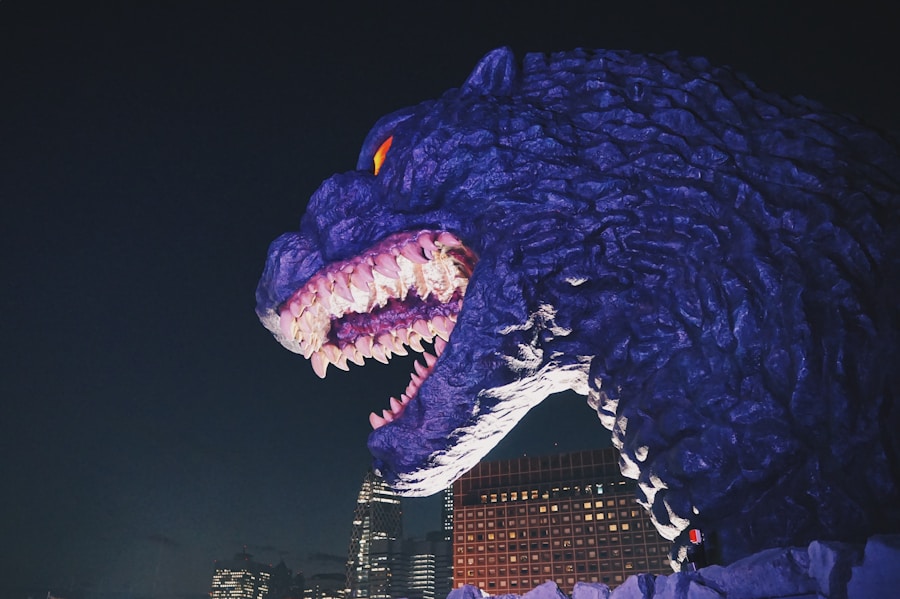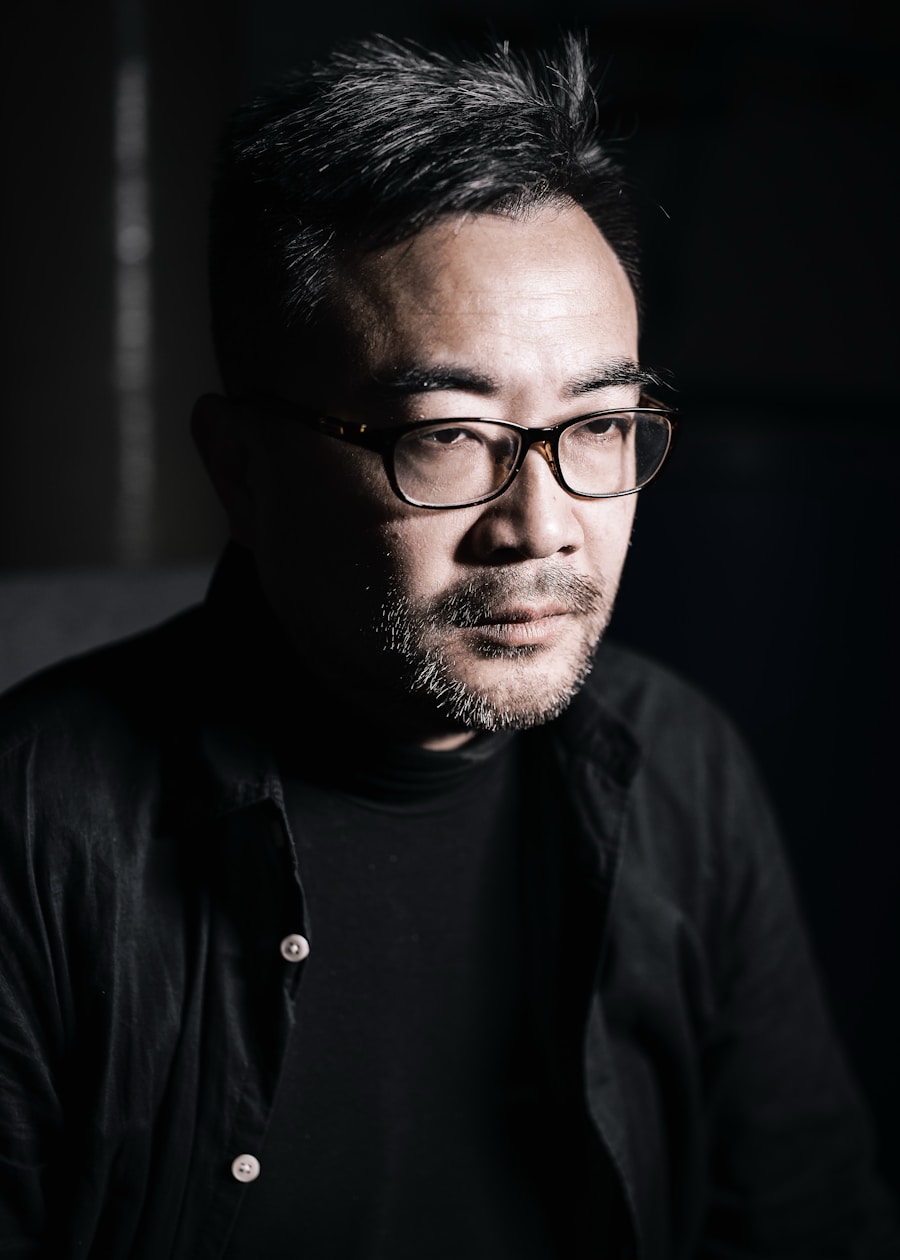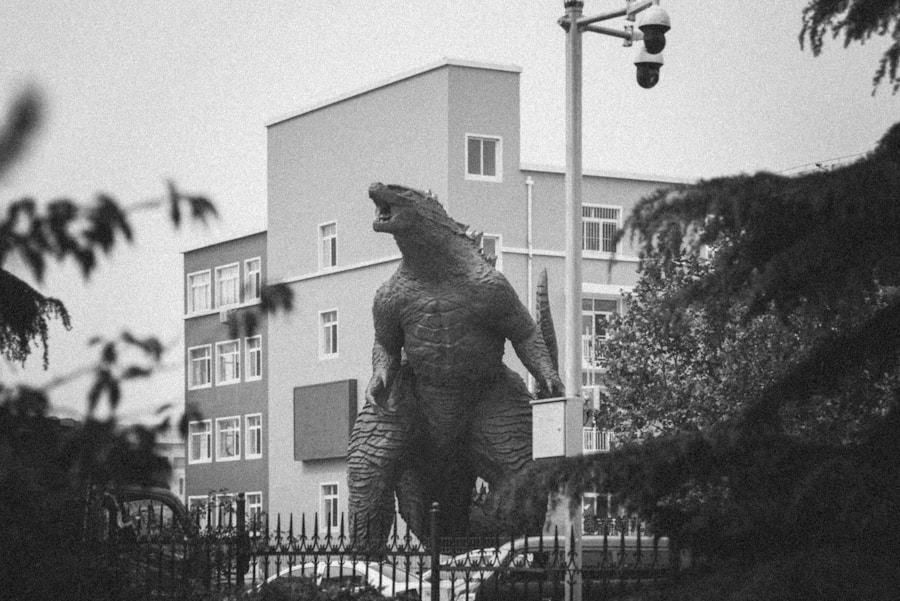Kaiju, the Japanese term for “strange beast,” has become synonymous with giant monsters that wreak havoc on cities and engage in epic battles. Originating in Japan, this genre has captivated audiences since the mid-20th century, with iconic creatures like Godzilla and Mothra becoming cultural touchstones. The allure of kaiju films lies not only in their thrilling action sequences but also in their ability to reflect societal fears and aspirations.
As you delve into the world of kaiju, you will discover a rich tapestry of storytelling that combines mythology, science fiction, and social commentary. The genre has evolved significantly over the decades, transitioning from the black-and-white films of the 1950s to the high-definition spectacles of today. Each era of kaiju cinema has brought its own unique flavor, influenced by technological advancements and changing cultural landscapes.
As you explore this fascinating world, you will encounter a diverse array of monsters, each representing different facets of humanity’s relationship with nature, technology, and each other. The kaiju phenomenon is not merely about destruction; it is a complex narrative that invites you to reflect on the world around you.
Key Takeaways
- Kaiju are giant monsters from Japanese cinema, often portrayed as destructive forces.
- Shinji Higuchi has had a significant impact on Kaiju films, both as a director and special effects artist.
- The evolution of Kaiju in modern cinema has seen a shift towards more realistic and emotionally complex portrayals.
- Higuchi’s unique approach to Kaiju design and special effects has set a new standard for the genre.
- Higuchi’s directing style in Kaiju films emphasizes the human drama and emotional impact of the monster’s destruction.
Shinji Higuchi’s Impact on Kaiju Films
The Early Years and Innovative Techniques
Higuchi’s career began in the 1980s, and he quickly gained recognition for his groundbreaking techniques that blended practical effects with cutting-edge CGI. This fusion allowed for a more immersive experience, drawing viewers into the chaos and wonder of kaiju battles.
Humanizing the Monsters
One of Higuchi’s most significant contributions to kaiju films is his ability to humanize these colossal creatures. Rather than portraying them solely as mindless destroyers, he infuses them with depth and emotion. This nuanced approach invites you to empathize with the monsters, understanding their motivations and struggles.
A Deeper Impact
In films like “Shin Godzilla,” Higuchi masterfully captures the duality of destruction and vulnerability, prompting you to consider the broader implications of humanity’s actions on the environment and society. His impact extends beyond mere visual spectacle; he challenges you to engage with the themes that underpin the kaiju narrative.
The Evolution of Kaiju in Modern Cinema

As you examine the evolution of kaiju in modern cinema, it becomes evident that the genre has undergone a remarkable transformation. The early films often relied on practical effects and suitmation, where actors donned costumes to portray towering beasts. While this technique has its charm, advancements in technology have allowed filmmakers to create more realistic and dynamic representations of kaiju.
The introduction of CGI has revolutionized the genre, enabling filmmakers to craft breathtaking visuals that were once unimaginable. However, this evolution is not solely about technological advancements; it also reflects changing societal concerns. Modern kaiju films often grapple with themes such as environmental degradation, nuclear anxiety, and the consequences of unchecked technological progress.
As you watch these films, you may find yourself drawn into narratives that resonate with contemporary issues. The monsters are no longer just symbols of destruction; they embody the fears and hopes of a generation grappling with complex global challenges. This evolution ensures that kaiju remains relevant, continually adapting to reflect the zeitgeist of each era.
Higuchi’s Unique Approach to Kaiju Design and Special Effects
| Aspect | Data/Metric |
|---|---|
| Number of Kaiju Designed | Over 50 unique kaiju designed by Higuchi |
| Special Effects Techniques | Utilized a combination of practical effects, miniatures, and CGI |
| Collaborations | Worked with renowned directors such as Hideaki Anno |
| Impact | Higuchi’s designs have influenced the kaiju genre and inspired future filmmakers |
Higuchi’s unique approach to kaiju design and special effects sets him apart from his contemporaries. He possesses an innate ability to blend traditional craftsmanship with modern technology, creating creatures that feel both authentic and awe-inspiring. His designs often draw inspiration from nature, resulting in monsters that are not only visually striking but also biologically plausible.
This attention to detail enhances your viewing experience, as you become immersed in a world where these colossal beings could realistically exist. In addition to his design philosophy, Higuchi’s mastery of special effects is evident in his meticulous attention to movement and scale. He understands that a kaiju’s physicality is crucial to its believability; every roar, stomp, and interaction with its environment must convey weight and power.
By employing a combination of practical effects—such as animatronics and miniatures—alongside CGI enhancements, he creates a seamless blend that captivates audiences. When you watch a film directed by Higuchi, you are not merely observing a monster; you are witnessing a living entity that commands your attention and evokes genuine emotion.
Analyzing Higuchi’s Directing Style in Kaiju Films
Higuchi’s directing style is characterized by a keen understanding of pacing and tension, elements that are vital in crafting an engaging kaiju narrative. He skillfully balances moments of intense action with quieter scenes that allow for character development and thematic exploration. This approach ensures that you remain invested in both the human characters and the monsters they face.
By weaving together personal stories with grand-scale destruction, Higuchi creates a narrative tapestry that resonates on multiple levels. Moreover, Higuchi’s use of perspective plays a crucial role in shaping your experience as a viewer. He often employs dynamic camera angles and sweeping shots that emphasize the scale of the kaiju while simultaneously grounding you in the human experience.
This technique allows you to feel the weight of the situation—both literally and metaphorically—as characters grapple with their fears and desires amidst chaos. Through his directing style, Higuchi invites you to reflect on your own relationship with fear, power, and responsibility in an ever-changing world.
The Cultural Significance of Kaiju in Japanese Cinema

Allegories for Real-World Concerns
As allegories for real-world concerns, kaiju films provide a platform for audiences to confront their fears through fantastical narratives. The monsters serve as vessels for societal reflection, prompting discussions about humanity’s impact on nature and the consequences of technological advancement.
Shaping Japan’s National Identity
Kaiju films have played a vital role in shaping Japan’s national identity on the global stage. Characters like Godzilla have transcended their origins to become international icons, representing not only Japanese culture but also universal themes of destruction and resilience.
A Global Cultural Phenomenon
The cultural significance of kaiju extends beyond entertainment, serving as a powerful medium for exploring complex societal issues. As you engage with these stories, you’ll discover how they resonate across cultures, inviting viewers from around the world to grapple with shared fears and aspirations.
Higuchi’s Influence on the Future of Kaiju Films
As you consider Higuchi’s influence on the future of kaiju films, it becomes clear that his innovative spirit will continue to shape the genre for years to come. His commitment to blending traditional techniques with modern technology sets a precedent for aspiring filmmakers who seek to push boundaries while honoring the legacy of kaiju cinema. By embracing both practical effects and CGI, Higuchi demonstrates that there is no singular approach to creating compelling monster narratives; rather, it is about finding harmony between different methods.
Moreover, Higuchi’s emphasis on character-driven storytelling will likely inspire future filmmakers to prioritize emotional depth alongside spectacle. As audiences increasingly seek narratives that resonate on a personal level, the importance of humanizing monsters will become even more pronounced. You can expect future kaiju films to explore complex themes while delivering breathtaking visuals—an evolution that reflects both Higuchi’s influence and the changing landscape of cinema itself.
The Legacy of Shinji Higuchi’s Modern Vision for Kaiju
The legacy of Shinji Higuchi’s modern vision for kaiju is one marked by innovation, empathy, and cultural relevance. His contributions have not only redefined how giant monsters are portrayed but have also elevated the genre as a whole. As you reflect on his work, you’ll recognize that Higuchi has created a space where kaiju can thrive as both entertainment and art—a realm where audiences can confront their fears while celebrating creativity.
In an ever-evolving cinematic landscape, Higuchi’s vision serves as a guiding light for future generations of filmmakers. His ability to blend spectacle with substance ensures that kaiju will continue to resonate with audiences around the world. As you engage with this genre moving forward, remember that each roar and clash carries with it a rich history—a testament to the enduring power of storytelling through monstrous forms.
The legacy of Shinji Higuchi is not just about giant creatures; it is about the profound connections we forge through shared narratives that challenge us to reflect on our own humanity amidst chaos.
